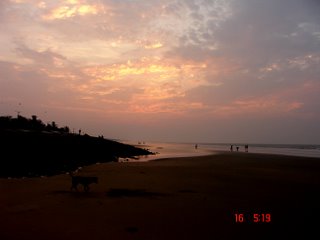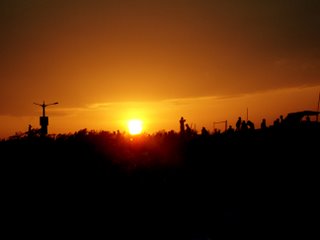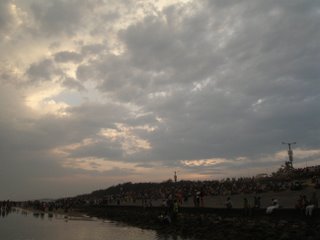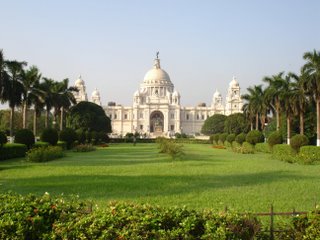Konark - Amazing piece of sculpture
Konark is also known as Konaditya. The name Konark is derived form the words Kona - Corner and Arka - Sun; it is situated on the north eastern corner of Puri or the Chakrakshetra. Konark is also known as Arkakshetra.

This temple built in 1278 CE by the Ganga King Narasimhadeva. The entire temple was designed in the shape of a colossal chariot with seven horses and twelve wheels, carrying the sun god, Surya,

The temple is a brilliant chronicle in stone, with thousands of images including deities, the Surasundaris, heavenly damsels, and human musicians, lovers, dancers, and different scenes from courtly life.

It is said that the temple was not completed as conceived because the foundation was not strong enough to bear the weight of the heavy dome. Local beleif has it that it was constructed in entirety, however its magnetic dome caused ships to crash near the seashore, and that the dome was removed and destroyed and that the image of the Sun God was taken to Puri.

The entire temple has been conceived as a chariot of the sun god with 12 wheels, each about 10 feet in diameter, with a set of spokes and elaborate carvings. Seven horses drag the temple. Two lions guard the entrance, crushing elephants. A flight of steps lead to the main entrance.
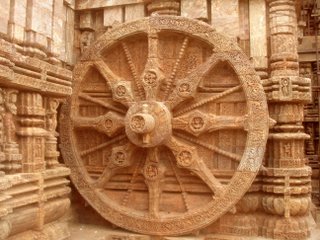
According to the guides, 'all life is here', which might go some way towards explaining the high population of India. This is wheel which shows all days work of a woman, starting form wakeup in the morning till having sex in night.

The Konark temple is widely known not only for its architectural grandeur but also for the intricacy and profusion of sculptural work

The main theme of the sculpture is love. There are beautifully shaped figures in close embrace, dancing or making music.

The fine sculptures depicting Court life, hunting, scenes, celestial deities are epitomes of precision and grace. Graceful sculptures from the world of the Kamasutra, epic of eroticism also adorn the structures.

Konark temple’s sculptures are living beauties in silence



